curiosity
Latest
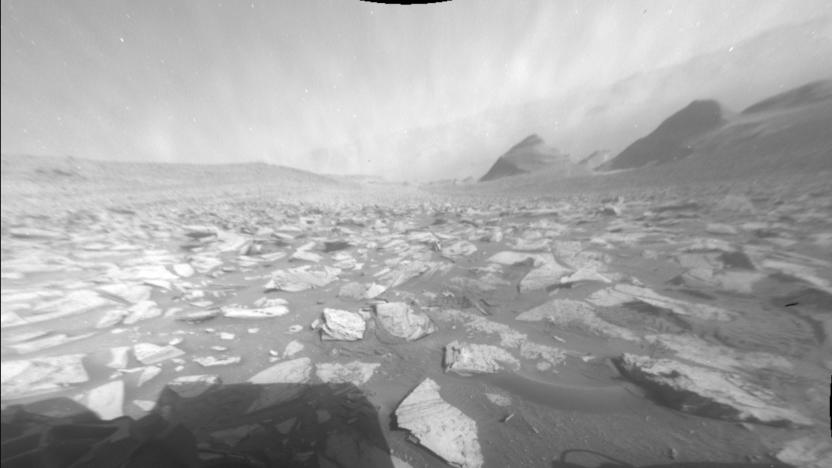
NASA’s Curiosity rover snapped this dreamy timelapse of a Martian day
NASA's Curiosity rover captured the passage of a Martian day over the course of 12 hours in November using its Hazard-Avoidance Cameras (Hazcams). The rover was parked ahead of a two-week pause in duties for the Mars solar conjunction.
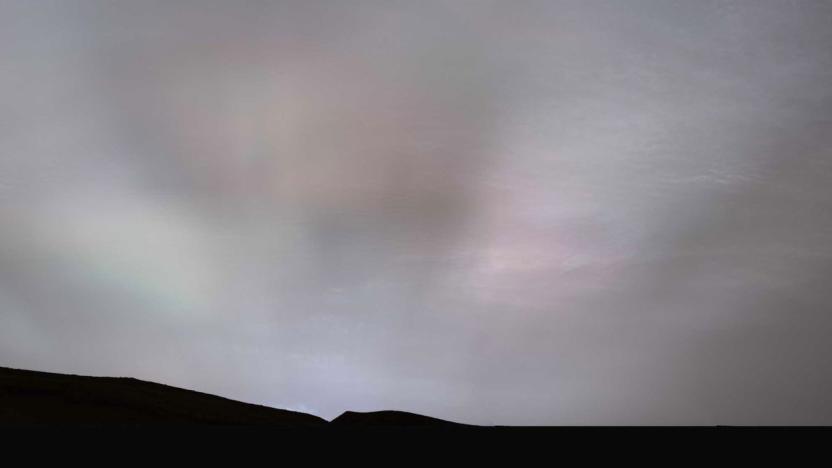
Curiosity rover captures our first clear view of Martian sunbeams
On February 2nd, Curiosity captured a rare sight on camera, making it the first time we've seen crepuscular rays (or "sun rays") this clearly from the Martian surface.

NASA's chief scientist will retire in 2022
NASA chief scientist Jim Green is retiring in 2022 after overseeing projects like the Curiosity rover and New Horizon.
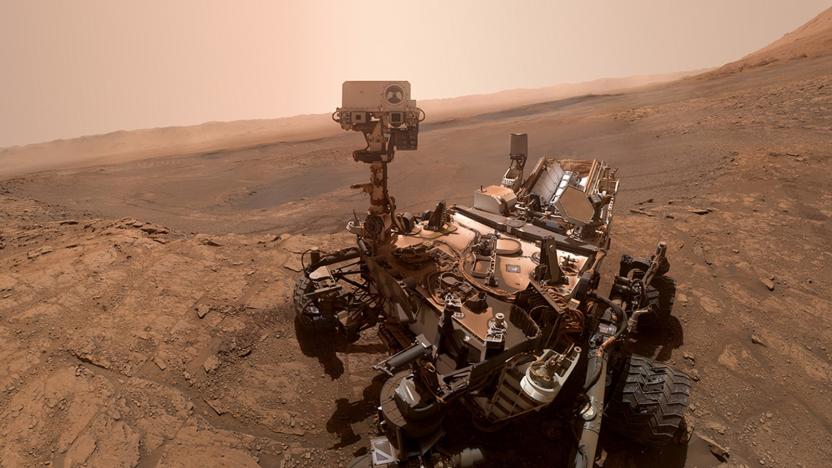
Curiosity rover might be sitting near microbe 'burps' on Mars
NASA's Curiosity rover might be sitting next to sources of methane 'burps' that might hint at microbial life or ancient water on Mars.
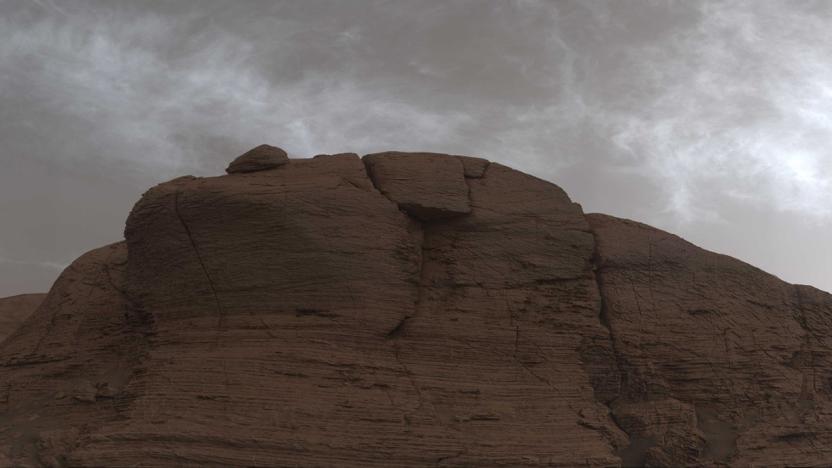
Curiosity rover offers a rare glimpse of cloudy days on Mars
NASA's Curiosity rover has offered a rare peek at clouds on Mars, and they've already led to a discovery.
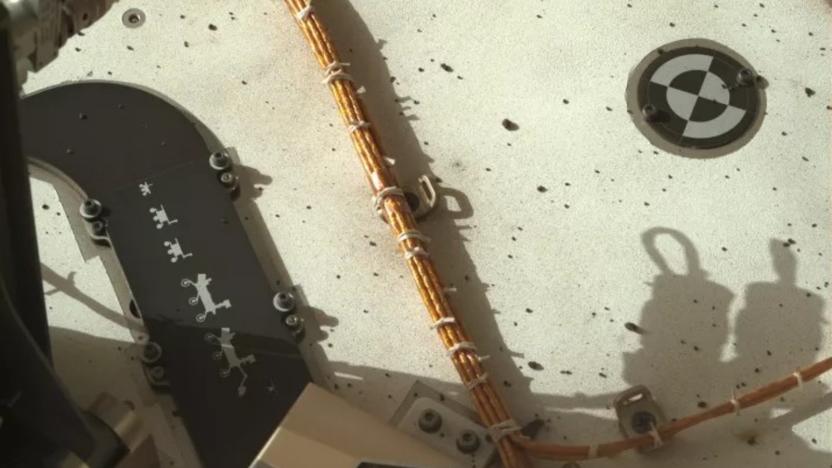
NASA’s Perseverance rover carried a family portrait of its robotic siblings to Mars
Like any good piece of high-tech hardware, NASA’s Perseverance rover features an Easter egg hidden in plain sight.
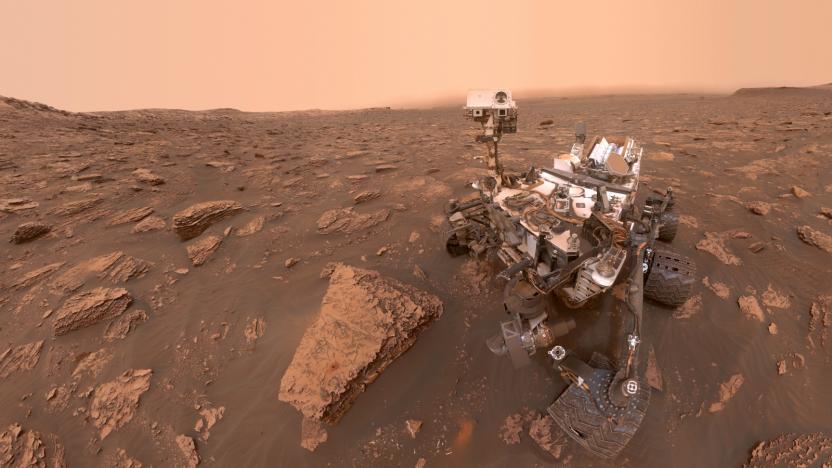
Curiosity rover finds evidence of ancient megafloods on Mars
Previous images of large channels on Mars and giant wave-like features on its surface called “megaripples” indicate that the planet suffered from catastrophic floods in the past. Now, a team of scientists has used data gathered by the Curiosity rover to prove that megafloods swept across the Gale crater around 4 billion years ago. “We identified megafloods for the first time using detailed sedimentological data observed by the rover Curiosity,” said Alberto G. Fairén, co-author of the paper published by Nature.
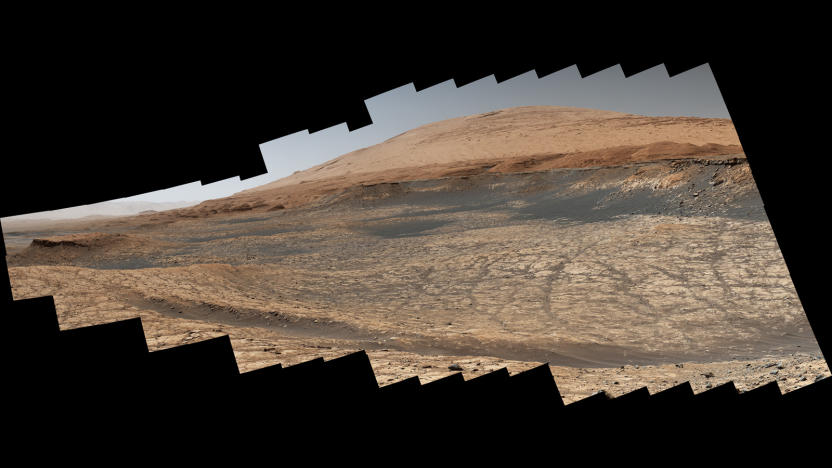
Curiosity rover starts its 'summer trip' to next Martian destination
The Curiosity rover’s next stop is Mount Sharp’s “sulfate-bearing unit.”

After Math: Anything worth doing is worth overdoing
2020 is shaping up to be the year without conventions. Google I/O, Facebook F8, GDC, OMG, and MWC have already been called off, with exhibitors jumping ship from SXSW by the handful and Computex and E3 likely next on the chopping block. But these are not days for half measures, as this week's headlines illustrate.
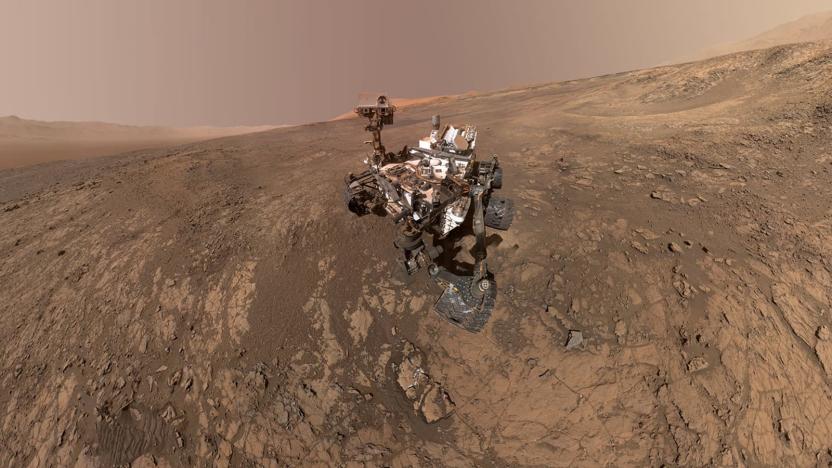
NASA just witnessed its biggest methane gas emission on Mars
NASA has confirmed that the Curiosity rover recently detected the "largest amount of methane ever measured during the mission." The levels were enough to pause the rover's activities as scientists sought more answers: Methane is a gas typically produced by life as we know it, after all, and it could be a sign of life on the planet. Curiosity's methane reading came to 21 parts per billion units by volume, which is thrice the amount it sniffed out during a surge in 2013.
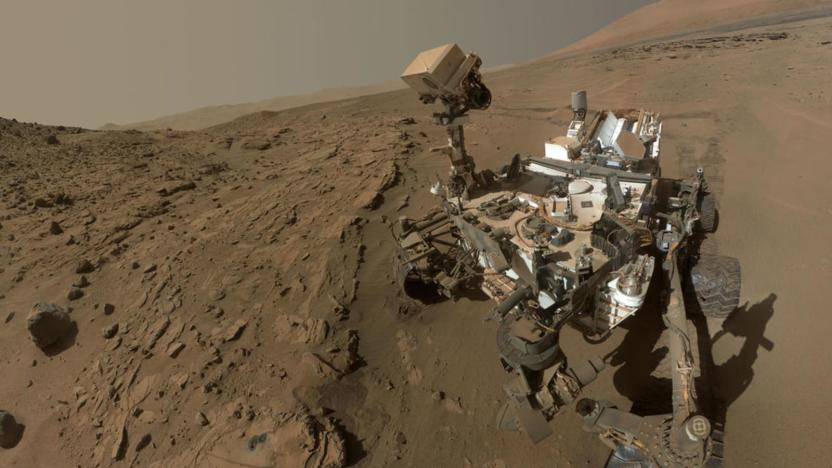
Curiosity rover finds gas levels on Mars hinting at possibility of life
It's easy to get jaded about potential signs of life on Mars, but a recent discovery might raise eyebrows. The New York Times has learned that NASA's Curiosity rover has detected "startlingly high" levels of methane -- the gas typically produced by life as we know it. The quantities are still tiny at 21 parts per billion, but that's three times the amount Curiosity spotted during a surge in 2013. The rover's operators were reportedly surprised enough to pause regularly scheduled studies to obtain follow-up data, with the additional findings slated to arrive on June 24th.

Facebook Research is developing touchy-feely curious robots
As a social media platform with global reach, Facebook leans extensively on its artificial intelligence and machine-learning systems to keep the site online and harmful content off it (at least, some of the time). Following its announcement at the start of the month regarding self-supervised learning, computer vision, and natural language processing, Facebook on Monday shared details about three additional areas of research that could eventually lead to more capable and curious AI.

Honda teams up with MIT and others to develop curious AI
Honda is teaming up with three universities on a project aimed at developing curious artificial intelligence. The new three-year initiative, dubbed the Curious Minded Machine, will work towards an intelligent system that can learn continuously, much like a human, and can actually "learn to learn," as children do. "Our ultimate goal is to create new types of machines that can acquire an interest in learning and knowledge, and the ability to interact with the world and others," Soshi Iba, a principal scientist at the Honda Research Institute, said in a statement. "We want to develop Curious Minded Machines that use curiosity to serve the common good by understanding people's needs, empowering human capability and ultimately addressing complex societal issues."

NASA activated Curiosity's second 'brain' after it misbehaved
Tired? Sluggish? Wouldn't it be great if you could just switch your brain to a better functioning version? Well, that's a privilege you can enjoy if you're the Mars Curiosity rover. NASA's intrepid explorer has been subject to a few technical problems over the last two weeks, which means it's been struggling to send its data back to Earth, so engineers have decided to activate Curiosity's second brain.

NASA images show Martian dust storms engulfing the entire planet
Martian dust storms can make nasty sand devils look cute, and every six to eight years, they can grow large enough to engulf the whole planet. Global-scale storms happen when several smaller ones kick up enough dust to envelope the planet's surface. But since they only occur every once in a while, scientists still don't know much about them, including why they form and how exactly they evolve. They'll soon have a treasure trove of data to work with, though, now that NASA'S Martian probes have trained their eyes on a massive storm that's currently covering the planet with cloud and haze.
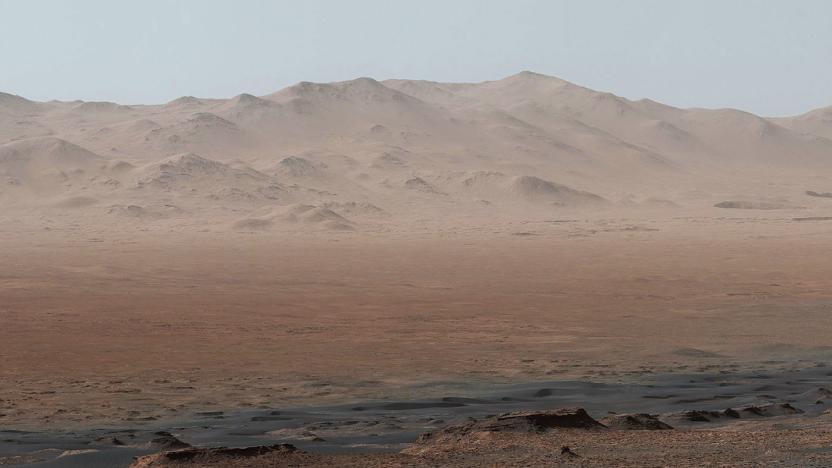
Curiosity's sweeping Mars panorama shows how far it's come
After over five years on Mars, the Curiosity rover has done a lot of science and taken a few knocks. While trekking up Mount Sharp recently, however, it paused at Vera Rubin Ridge during a rare period of clear weather. There, it used its mast camera to snap 16 images that NASA assembled into a magnificent, ultra-wide-screen panorama (and video, below) that shows its entire trip to date.
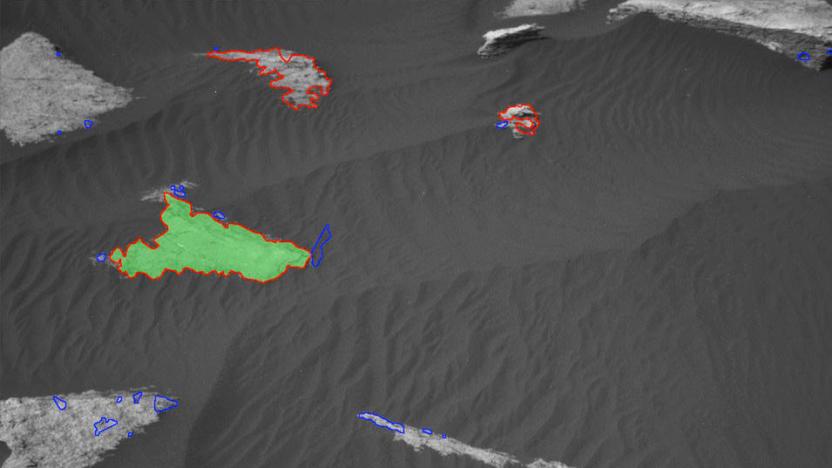
Mars Rover’s AI is really good at selecting rocks to analyze
If we truly want to go to Mars, then we really need to know what it's made of -- it's hard to bring everything you need from Earth. NASA's Curiosity Mars rover has been using specialized AI software to zap soil and rocks on the planet this past year to discover what each is made of. The software that guides the rover's efforts is called AEGIS, or Autonomous Exploration for Gathering Increased Science. AEGIS allows the rover to get more science of this nature done while Curiosity is out of contact with its human controllers, according to a new paper published by NASA in Science Robotics.
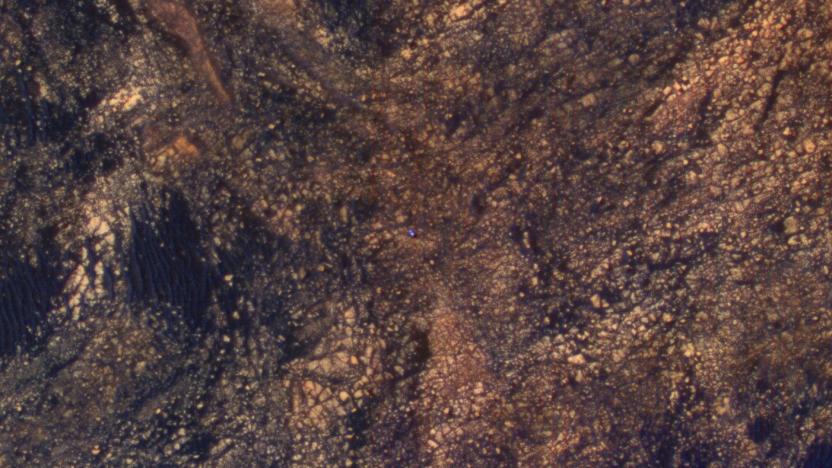
NASA's Curiosity rover is just a speck in this orbiter photo
At this distance, Curiosity looks like a tiny beetle crawling over volcanic rock. Electric blue, its protective shell stands out against the rough, jagged mountainside. In reality, this is an image shot by NASA's Mars Reconnaissance Orbiter, an observational craft floating 200 miles above the planet's surface. We have, of course, seen Curiosity countless times before — it has a thing for selfies — but rarely from afar. In this photograph, you get a real sense of the planet's natural beauty and how empty, or quiet it must seem compared to Earth. Not that Curiosity minds, of course.

Mars rover's home crater was a potential hotbed for life
NASA landed the Curiosity rover in Mars' Gale Crater precisely because it promised to be a sort of open book that revealed a lot about the planet's history. Well, scientists have been busy reading... and it looks like the crater had an intriguing past. Two newly published research papers indicate that Gale was a warm lake for for a period of about 700 million years, ending about 3.1 billion years ago. In other words, it was habitable for a very long time. Even then, groundwater persisted for a long time afterwards.
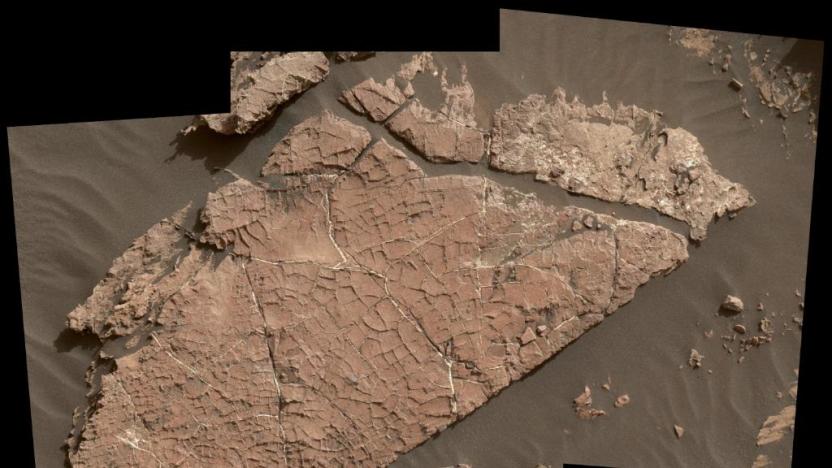
NASA's Curiosity finds new water evidence in possible cracked mud
NASA's four-year-old Curiosity rover spent 2016 discovering new clues to Mars' history, including veins potentially from evaporated lakes and mineral deposits suggesting the planet once had oxygen. The craft spent the beginning of 2017 examining a newly-discovered natural formation: Rock cross-cut with ridges, which are probably mud cracks.










